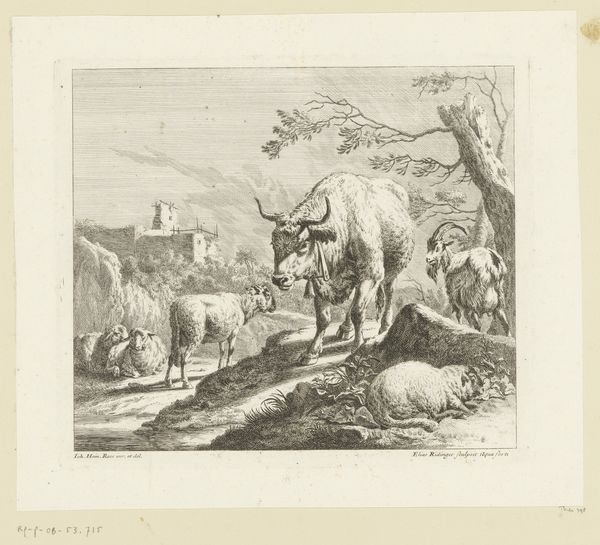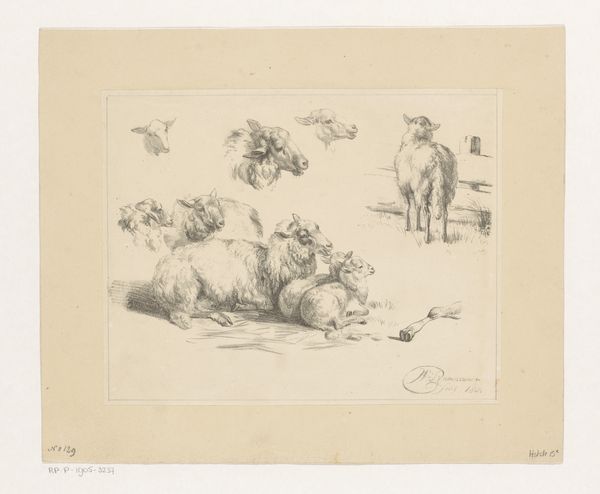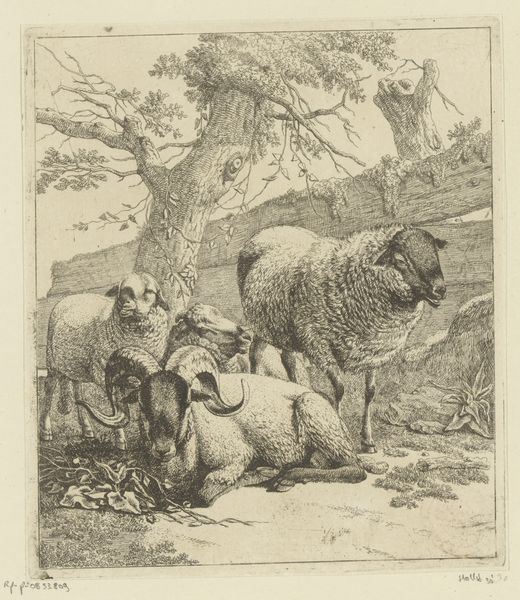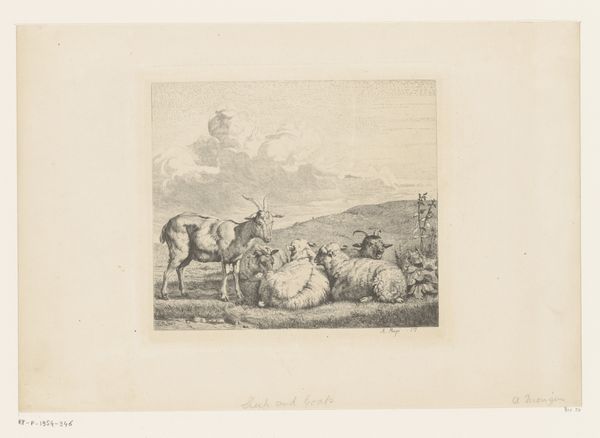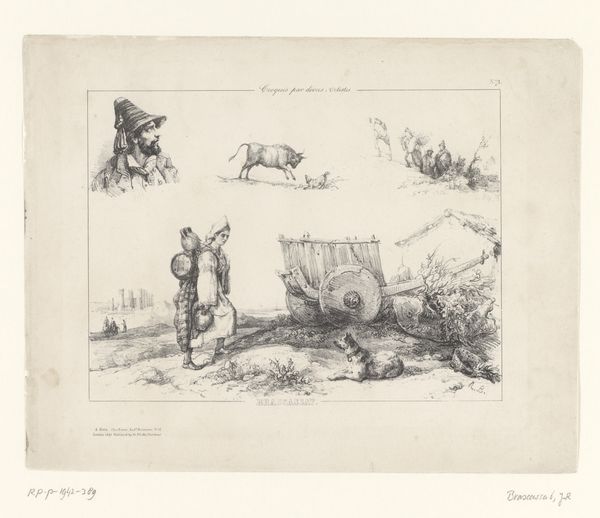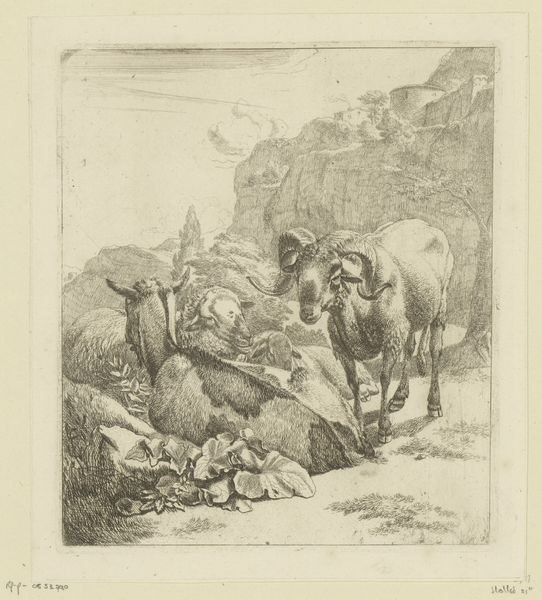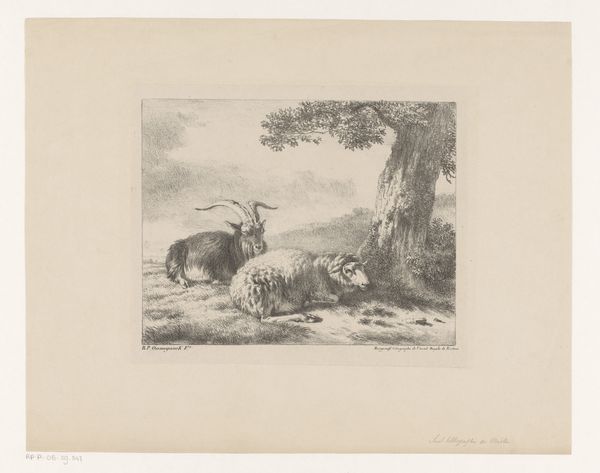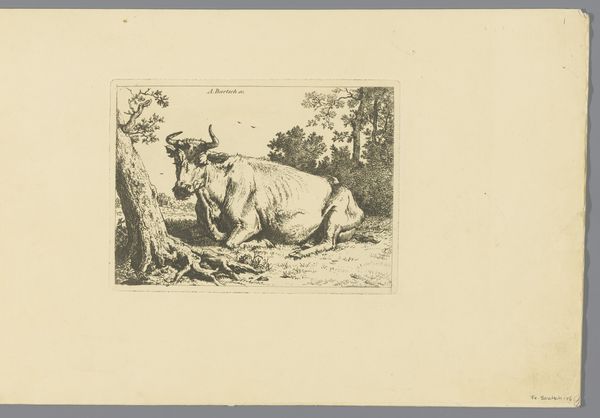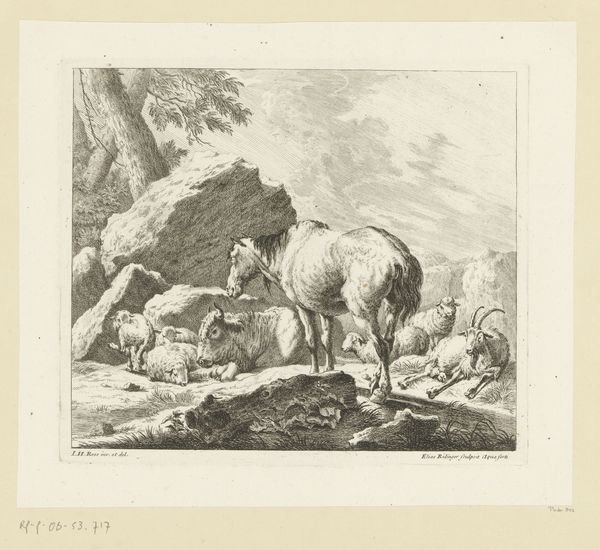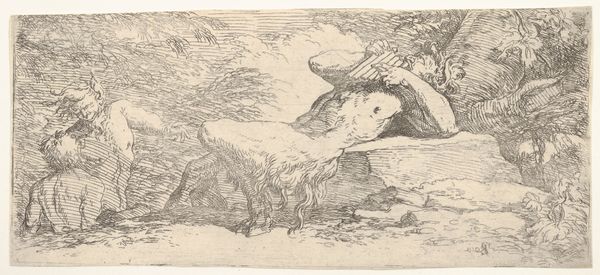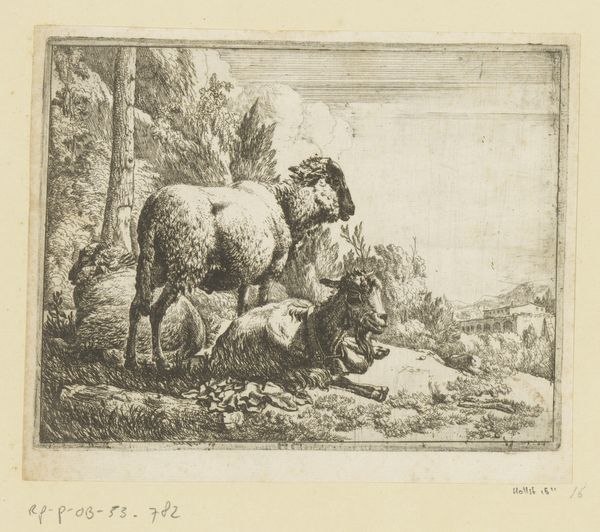
drawing, pencil
#
drawing
#
toned paper
#
light pencil work
#
ink paper printed
#
pencil sketch
#
landscape
#
figuration
#
personal sketchbook
#
ink drawing experimentation
#
romanticism
#
pen-ink sketch
#
pencil
#
sketchbook drawing
#
pencil work
#
sketchbook art
#
realism
Dimensions: height 181 mm, width 248 mm
Copyright: Rijks Museum: Open Domain
Johan Thomas Lundbye created this etching, "Sheep at a Dolmen," during Denmark’s Golden Age. The dolmen, a stone tomb, stands as a silent witness to centuries past, while the sheep represent the pastoral present. Lundbye, deeply invested in Danish nationalism, often depicted the country's landscape to evoke a sense of national identity and pride. Here, the dolmen, a relic of ancient inhabitants, becomes a symbol of Danish history, suggesting a continuous, unbroken connection to the land. The sheep, peacefully grazing, embody a romantic vision of rural life, untouched by industrialization and social change. There’s a palpable tension between the weight of history and the lightness of the present, between the solemnity of the tomb and the vitality of the animals. In a time of shifting national and cultural identities, Lundbye’s etching offers a serene, idealized vision of Denmark, rooted in its ancient past and thriving in its pastoral present.
Comments
No comments
Be the first to comment and join the conversation on the ultimate creative platform.
